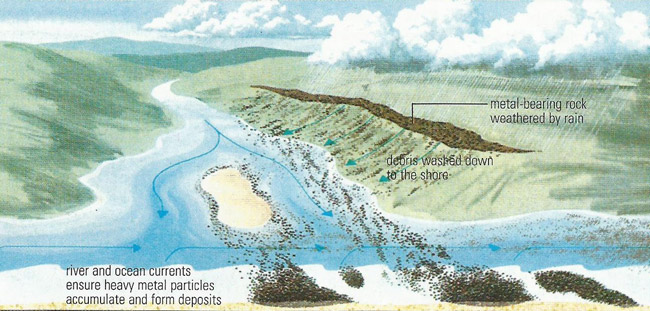placer deposits

Placer deposits are concentrations of heavy minerals formed by the action of gravity, usually found in streams. Minerals that occur as placer deposits include gold, copper, rutile, cassiterite, and magnetite.
Most offshore minerals, with the exception of oil and gas, don't occur in sufficiently high-ore grades to warrant their economic production. Nevertheless significant amounts of tin, diamonds, gold, and titanium are recovered from beach and offshore placer deposits all over the world. Sulfur is extracted commercially in a number of areas, including the Gulf of Mexico, and the most important mineral resources after oil and gas are sand and gravel dredged from offshore deposits for use in the construction industry. Placer deposits occur where metal-bearing rock on land is weathered and the debris produced is washed down to the sea by rivers. There it is sorted by the currents, waves, and tides so that the heavy metal particles accumulate to form deposits of mineral sand. These typically take the form of beach deposits, but where the sea level has changed they can be found well out on the continental shelf. The sands are lifted by dredgers and sifted for their metal content.


